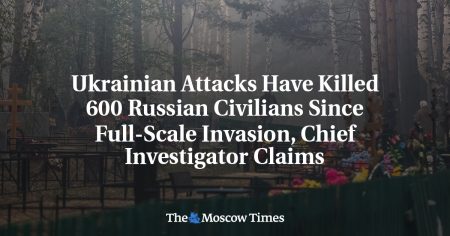A drone crashed into a government building in Belgorod, Russia, injuring a woman with shrapnel wounds. Governor Vyacheslav Gladkov confirmed the incident, noting that the explosion caused damage to the building’s windows and facade. Subsequent reports indicated that anti-aircraft systems managed to down three additional drones that were headed towards the city. There were unverified reports that a local police station was also damaged in the drone crash. Regional media outlets were allegedly instructed not to publicize the address of the damaged building by local “censors.”
The incident in Belgorod comes amidst a significant rise in Ukrainian attacks along Russia’s western border. There have also been incursions by pro-Kyiv militias made up of Russian volunteers in recent months. These incidents have added to the existing tension in the region, fueling concerns about potential further escalations in the conflict. The use of drones in these attacks represents a new and increasingly common tactic employed by both sides. The drone crashes in Belgorod highlight the evolving nature of warfare in the region and the challenges posed by the use of unmanned aerial vehicles in conflict situations.
Governor Gladkov’s swift response to the drone incident reflects the urgency with which local authorities are addressing the ongoing security threats in the region. The downing of three additional drones by anti-aircraft systems demonstrates the readiness and capability of the defense forces to protect the city against potential further attacks. The injured woman’s hospitalization underscores the real-life impact of these incidents on civilians living in the affected areas. It also serves as a reminder of the human cost of warfare and the importance of prioritizing the safety and well-being of individuals caught in conflict zones.
The involvement of Russian volunteer fighters in the conflicts along the country’s western border adds another layer of complexity to the situation. The use of drones by both Ukrainian forces and pro-Kyiv militias suggests a heightened level of technological sophistication on both sides. This technological arms race poses challenges for traditional defense mechanisms and underscores the need for innovative and adaptive responses to emerging security threats. The demand by local authorities to withhold the damaged building’s address from the public is likely aimed at safeguarding the security and privacy of those directly impacted by the incident.
As tensions continue to escalate in the region, there is a growing need for international cooperation and diplomatic efforts to de-escalate the situation. The ongoing conflict poses a threat not only to the security and stability of the region but also to global peace and security. The use of drones in attacks further complicates the conflict dynamics and increases the risk of civilian casualties. It is essential for all parties involved to prioritize dialogue and negotiation as a means to achieve a peaceful resolution to the conflict and prevent further loss of life and destruction. The incident in Belgorod serves as a stark reminder of the critical need for concerted efforts towards conflict resolution and lasting peace in the region.















